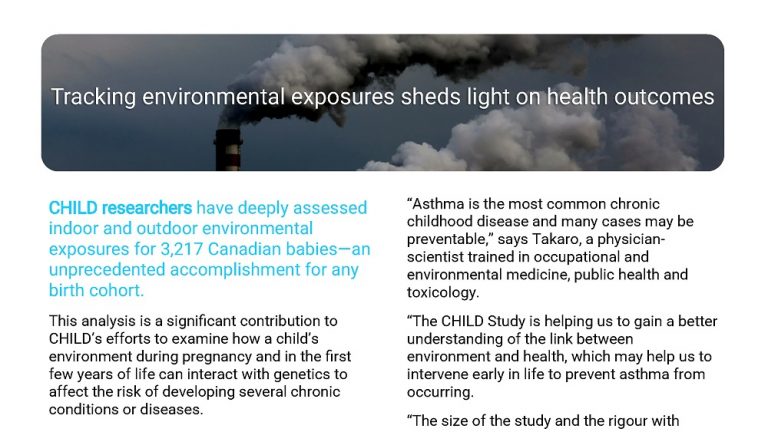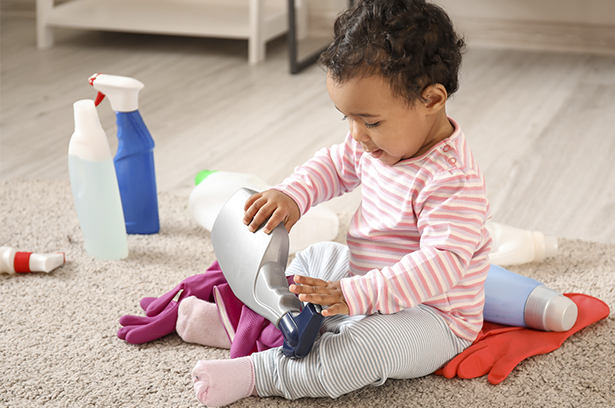Tracking environmental exposures sheds light on health outcomes
CHILD researchers have deeply assessed indoor and outdoor environmental exposures for 3,217 Canadian babies—an unprecedented accomplishment for any birth cohort.
This analysis is a significant contribution to CHILD’s efforts to examine how a child’s environment during pregnancy and in the first few years of life can interact with genetics to affect the risk of developing several chronic conditions or diseases.
Lead investigator Simon Fraser University health scientist Tim Takaro and colleagues inspected carefully the homes of more than 3,000 babies. They analyzed exposure to dust, mould, furry pets, chemicals and cleaning products, cooking emissions, second-hand smoke, and traffic-related air pollution.
UNPRECEDENTED
It’s the first study of its kind to analyze the home environment of such a large number of study participants in such detail. It’s also unprecedented in its ability to link the home environment with epigenetic changes and the potential role of the microbiome—the combined genetic material of the microorganisms in a particular environment.
“Asthma is the most common chronic childhood disease and many cases may be preventable,” says Takaro, a physician-scientist trained in occupational and environmental medicine, public health and toxicology.
“The CHILD Study is helping us to gain a better understanding of the link between environment and health, which may help us to intervene early in life to prevent asthma from occurring. The size of the study and the rigour with which we assess environmental exposure will increase our capacity to detect associations between environmental factors and health outcomes.”
Adds Malcolm Sears, a professor emeritus at McMaster University and founding director of the CHILD Study:
“This is one of the largest studies in the world to look in depth at how genes and the environment interact to impact the development of allergies, asthma and other chronic diseases. We believe the study’s findings will influence public policy, parenting decisions, purchasing behaviours, and even urban planning.”




